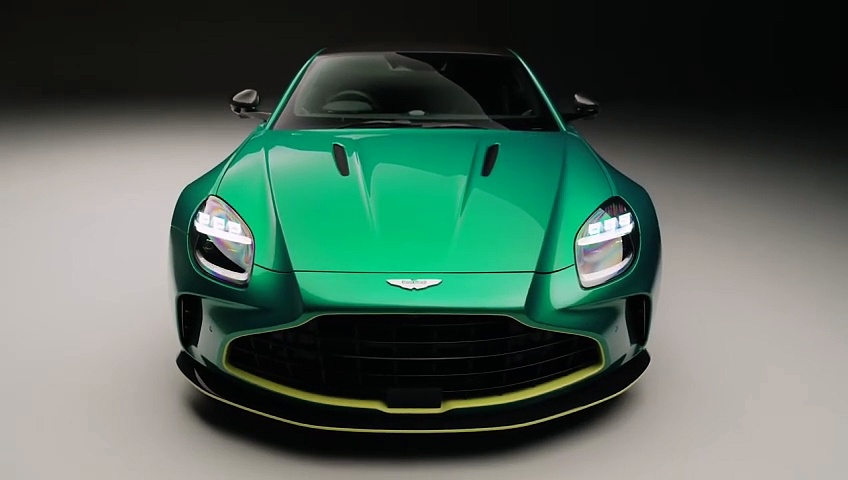
The end result of these changes is naturally impressive. The Mercedes-sourced 4.0-liter V8 engine in the Vantage now produces a massive 656 horsepower (665 PS), 153 horsepower more than the old car. This is the result of not just a few extra pounds of boost, but the aforementioned cams, larger turbos, and modified compression ratio. A total of three new heat exchangers were added to manage both coolant and charge air temperature. The oil cooler is also larger. There seems to be a lot of heating going on here.
The AMG V8 is backed by the tried-and-true 8-speed ZF automatic transmission, which sends power to the rear wheels via an electronic limited-slip differential. The final drive in the differential has been shortened to 3.083:1 to enable quicker acceleration, but this hasn't affected the Vantage's long-legged top speed. The new Aston not only accelerates to 60 mph in 3.4 seconds, but also reaches a top speed of 202 mph.
The new Vantage is glued together like the old car. In the automotive world they call this coupling. The nature of the process allows for some flexibility in the chassis structure, which Aston decided to take advantage of. The new car has a revised underbody that increases torsional rigidity. The company also repositioned one of the main front cross members; He says this increases the stiffness of the suspension mounting points and improves steering feel. The strut support is also lighter and stiffer.
Chassis rigidity has also been improved through various changes, enabling the car's new Bilstein DTX adaptive dampers to perform even better. It's hard to quantify what all this means on paper, but Aston insists there are tangible differences behind the wheel between the new and old settings.
The software enables all these hardware changes. Aston says the car's various traction management modes, launch control system and electronic power steering have been retuned to deliver greater performance and driver involvement. The company has explained at length how all these systems collect data and work, but the real test will be how it all comes together on a winding road.
The braking system that stops all this technology is a braking system consisting of front 400 mm steel rotors with six-piston calipers and rear 360 mm rotors with four-piston calipers. A set of carbon ceramics is also optional, shedding about 60 pounds of unsprung weight.
There are more changes going on here than can reasonably be listed outside of a spreadsheet, but the bottom line is, just look at this thing. It's more than an inch wider than the previous car, and the body panels have been significantly re-trimmed. It is a two-door GT car with the engine at the front and driving to the rear wheels. Odds can only go so wrong. Plus, we've already seen most of this car at Daytona that no one noticed.
Deliveries of the new Vantage will begin in the 2nd quarter of 2024, and prices are likely to be announced during this period.
Source: https://www.motor1.com/news










